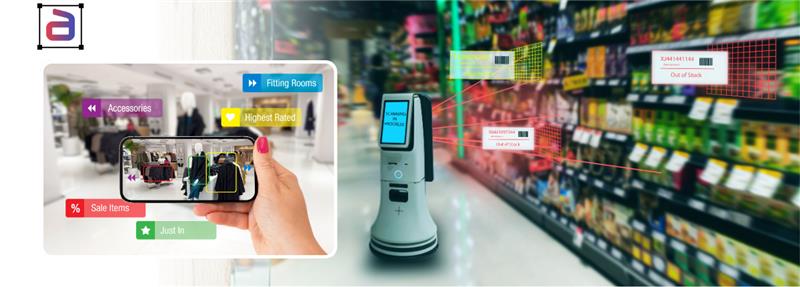The retail industry is undergoing a remarkable transformation—from static online catalogs to dynamic, personalized, and visually engaging shopping experiences. The difference between a thriving e-commerce leader and a struggling competitor often comes down to one thing: the intelligence behind their digital storefront. Retail Data Annotation is crucial for helping customers in their experience. Artificial Intelligence (AI) now drives everything from anticipating customer needs to recognizing products in images, ensuring every item is instantly discoverable.
At the core of this AI revolution lies a critical but often overlooked factor: high-quality annotated data.
For retailers, the dream of automated inventory management, seamless “shop-the-look” features, and perfectly tailored recommendations remains just that—a dream—without meticulously labeled data. The sophistication of an AI model is directly proportional to the quality of the data it is trained on. This is where Annotera steps in. We act as the essential bridge between raw product imagery and truly intelligent retail applications, specializing in the precision labeling necessary to power the next generation of retail technology.
This domain requires data annotation to excel across three pivotal areas: Precise Product Tagging, Advanced Visual Search capabilities, and Hyper-personalized Recommendation Engines.
The Foundation: Achieving Granular Precision in Product Tagging
Imagine a catalog with millions of Stock Keeping Units (SKUs). Manually ensuring every item is correctly tagged with attributes like fabric-type, neckline-style, hem-length, and pattern-density is a monumentally complex and error-prone task. Yet, without this level of detail, models cannot accurately learn product features, leading to poor search results and irrelevant recommendations.
Data annotation transforms this challenge. We utilize Computer Vision (CV) techniques like bounding boxes, polygons, and instance segmentation to isolate and label product features directly on the image data.
The Role of Fine-Grained Annotation
- Feature Extraction: Annotators are trained to identify subtle, style-specific attributes. For a dress, this isn’t just labeling it as ‘dress’; it involves flagging the precise location and nature of the zipper (hidden vs. exposed), the type of cuff (French vs. barrel), and the specific shade of a pattern.
- Data Consistency: Retail data is notorious for inconsistency. One vendor might call a color ‘Navy,’ while another calls it ‘Midnight Blue.’ Annotation harmonizes this data by applying a consistent, machine-readable taxonomy across the entire catalog. This foundational consistency is what drives reliable AI.
Statistic Spotlight: The high cost of poor data quality is staggering. Analysts estimate that data quality issues cost the U.S. economy up to $3.1 trillion per year. For retailers, this translates directly into lost sales from frustrated customers who can’t find products due to inconsistent tagging. Annotera’s validation-to-labeling workflow drastically reduces this hidden cost by delivering a gold standard dataset.
Accurate product tagging isn’t just about search; it’s about providing the high-dimensional input that fuels the recommendation engines, allowing them to match not just ‘shirts’ but ‘slim-fit cotton shirts with mandarin collars’ across disparate brands.
Enhancing Discovery: The Power of Visual Search For Retail Data Annotation
In the age of social media and visual inspiration, consumers want to be able to “See it, Search it, Shop it.” Visual Search, a form of Computer Vision, allows users to upload an image—be it a street style photo or a screenshot—and instantly find the exact or visually similar products within a retailer’s inventory. Enhancing discovery through visual search in retail data annotation allows customers to find products quickly using images rather than keywords. By accurately annotating visual attributes, AI systems recognize patterns, colors, and styles. Furthermore, this capability improves product recommendations, increases engagement, and ultimately drives higher conversions, creating a seamless and personalized shopping experience.
This capability is perhaps the most data-hungry application in retail AI.
Annotation for Real-World Context
To train a robust Visual Search model, the AI needs to be able to:
- Detect the Object: Accurately locate the item of interest (e.g., a handbag) within a cluttered, real-world scene (e.g., a photo of a person walking down a busy street).
- Understand the Context: Filter out irrelevant background elements and occlusion (partially hidden objects).
- Recognize Fine Detail: Match the detected object to a product in the catalog based on minute visual features.
Annotera achieves this through advanced Instance Segmentation, where every pixel of the target object is precisely masked. For complex items like clothing, we often use Keypoint Tracking to map specific points (e.g., collar endpoints, shoulder seams) that models use to understand garment structure and fit, not just color and texture.
Industry Quote: “Data is the fundamental ingredient for any successful AI project. The quality of that data is paramount, especially in visual commerce where models need to handle infinite variations of real-world lighting, angles, and occlusion.” — Andrew Ng’s principle on the primacy of data quality is highly relevant here; the complexity of real-world imagery demands perfection in annotation.
The investment in precise visual data pays off handsomely. Studies consistently indicate that mobile visual search users are highly engaged. These customers are often driven by immediate, high-intent inspiration, leading to higher conversion rates. By ensuring the model can accurately interpret user input, Annotera directly contributes to maximizing this high-value traffic.
Personalizing the Journey: Fueling Recommendation Engines
Recommendation Engines are the virtual sales associates of e-commerce. They guide the customer journey, from “Customers Also Bought” suggestions to personalized home page displays. Historically, these engines relied heavily on Collaborative Filtering (user behavior data: People who bought X also bought Y). Today’s advanced engines integrate Computer Vision to recommend products based on visual similarity and inferred style, a feat impossible without deep, accurate annotation.
Visual Features for Nuanced Recommendations For Retail Data Annotation
The true value of annotation in recommendations is moving from basic tagging to predictive styling. Visual features for nuanced recommendations in retail data annotation enable AI systems to understand product details, colors, textures, and patterns. By accurately labeling these elements, models can deliver more personalized and relevant suggestions. Moreover, leveraging high-quality visual annotations enhances customer engagement, boosts conversion rates, and drives smarter, data-driven retail strategies.
- Style Vectors: Annotation provides the visual feature vectors—the specific data points on texture, aesthetic, and formality—that allow an engine to suggest a visually and stylistically cohesive outfit. For example, suggesting a clutch that visually complements the specific material of a user’s previously viewed heels, rather than just suggesting another pair of heels.
- Solving the Cold Start Problem: New products lack historical sales data, making them invisible to traditional collaborative filters. By using Annotera’s meticulously generated tags, the engine immediately understands the new product’s visual and stylistic features. This instantly enables accurate recommendations based on visual similarity to existing products.
McKinsey & Company reports that companies driving personalization across the customer journey generated 40% more revenue from those activities than the average players. Personalized recommendations, powered by rich annotation, are a primary driver of this revenue uplift.
The Annotera Advantage: From Labeling to Validation and Automated Annotation
At Annotera, we understand that data annotation for retail is not a one-time task. It’s a continuous, cyclical process that demands extreme accuracy at scale. Our approach is holistic, covering the entire lifecycle. This is as detailed in our analysis, ‘Labeling to Validation: Automated Annotation for Quality and Scale’.
Our process emphasizes:
- Rigorous Quality Control (QC): We use multi-stage validation where expert annotators review data to ensure the final dataset. This is to ensure that it meets clients’ high standards. This often exceeds 99% accuracy.
- Tooling and Efficiency: We use advanced annotation tools for image segmentation and attribute labeling, significantly speeding up training data delivery.
- Human-in-the-Loop AI: For large projects, we use human expertise to refine and validate model outputs, ensuring efficiency without compromising quality. This iterative approach allows for rapid scaling as product catalogs grow and trends change.
Conclusion: Retail Data Annotation Competitive Edge
The future of retail is intelligent, and that intelligence is built on the foundation of high-quality data. Product Tagging ensures catalog integrity, Visual Search simplifies discovery, and Recommendation Engines drive engagement and conversion. In conclusion, retail data annotation provides a crucial competitive edge by transforming raw data into actionable insights. By ensuring accuracy, scalability, and contextual understanding, businesses can enhance personalization, optimize inventory, and improve customer experiences. Moreover, leveraging high-quality annotated data enables retailers to stay ahead of market trends and drive smarter, data-driven decisions.
Retailers aiming for predictive, personalized customer relationships must invest in meticulous, scalable data annotation.
Data is the new oil, and Annotera turns raw images into the high-quality fuel driving the AI retail annotation revolution. Partner with us to ensure your AI models are not just running, but excelling.
To learn more about how Annotera’s quality-focused workflows, can accelerate your retail AI initiatives, contact our team today.


